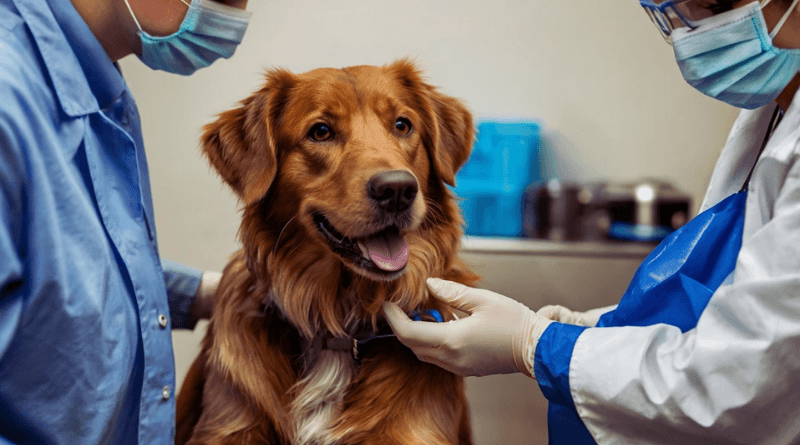Canine distemper prevention is essential to keep your pet safe from a dangerous virus that can affect their daily life by interfering with their ability to breathe, eat, and stay active. Canine distemper is a serious illness caused by a virus that can make it hard for your dog to breathe and digest, while also affecting its nervous system. This virus spreads very easily—from tiny drops in the air to shared food and water bowls and close contact with infected dogs. That is why canine distemper prevention should be your top priority, especially if your dog is a puppy or hasn’t been vaccinated yet.
What You Need To Know About Canine Distemper
Canine distemper is caused by a virus related to the human measles virus. It travels quickly through the air and by direct contact, making early diagnosis crucial. Veterinary experts such as those from the American Veterinary Medical Association and Cornell University College of Veterinary Medicine confirm that keeping up with your dog’s vaccinations is the best defense. Besides vaccinations, regular visits to the vet and maintaining a clean environment are key to reducing risks.
Recognizing The Signs Of Distemper
Distemper can begin with mild symptoms that are easy to overlook. Understanding these early signs can help you act swiftly.
Early Signs To Look Out For
- Fever and Tiredness: Your dog might seem more sluggish or less playful than usual. A mild fever is often one of the first hints.
- Runny Eyes and Nose: Watch for watery eyes or a runny nose. A little sneezing or eye discharge can be an early warning.
- Loss Of Appetite: Reduced interest in food or skipping meals may indicate the onset of distemper.
Advanced Signs And Complications
As the infection progresses, symptoms can worsen:
- Nervous System Signs: You may notice gentle twitching, shaking, or unusual movements. Difficulty walking or a loss of balance might occur.
- Digestive Problems: Vomiting and diarrhea can develop, heightening the risk of dehydration.
- Breathing Difficulties: Persistent coughing, trouble breathing, or unusual sounds when breathing show that the virus is impacting your dog’s lungs.
When you see these more serious signs, it is vital to call your vet right away for prompt care.
Canine Distemper Prevention Protecting Your Dog
Prevention is the best cure, and vaccination is at the heart of canine distemper prevention. Keeping your dog’s vaccinations updated not only protects your pet but also helps reduce the spread of the virus within the community.
The Importance Of Vaccination
Ensuring that your dog receives timely vaccines is the primary step in preventing distemper. Puppies start their vaccination routines as early as 6 to 8 weeks of age, and booster shots help maintain immunity as they grow. Consistent vaccination, along with regular vet check-ups, is strongly advised by experts to keep your dog safe.
Everyday Practical Steps
In addition to vaccinations, here are some practical steps you can follow:
- Limit Exposure: Avoid areas where unvaccinated dogs tend to gather, especially during an outbreak.
- Maintain A Clean Environment: Regularly clean your dog’s bedding, toys, and food bowls. A tidy home helps lower the risk of virus spread.
- Regular Vet Check-Ups: Establishing a routine for vet visits can help catch any subtle changes in your dog’s health early.
What To Do If You Suspect Distemper
Prompt action can make a significant difference if you suspect your dog might be affected:
- Call Your Vet Right Away: Whether it’s a hint of tiredness or more serious signs like coughing or shaking, contact your vet immediately. Early professional guidance ensures better management of symptoms.
- Keep Your Dog Isolated: Until your veterinarian provides a clear diagnosis, it’s best to keep your dog away from other animals.
- Follow Your Vet’s Instructions: Your vet may recommend simple at-home care—such as basic at-home fluid care to keep your dog hydrated, gentle feeding, and careful observation of behavior changes—to help manage the symptoms.
In Conclusion
Canine distemper is a dangerous virus, yet understanding its signs and taking early, proactive measures can safeguard your dog’s health. Keeping up with vaccinations, practicing good home hygiene, and staying alert to any changes in your pet’s behavior are the best ways to combat this illness. Your early detection and swift actions not only protect your dog but also help control the virus in the wider community.
Remember, your care and vigilance are key to your dog’s well-being. Stay informed, maintain regular vet check-ups, and never hesitate to seek professional help when something seems off. Your proactive efforts are the cornerstone of keeping your furry friend safe and happy.
Sources: American Veterinary Medical Association, VCA Animal Hospitals, PetMD

